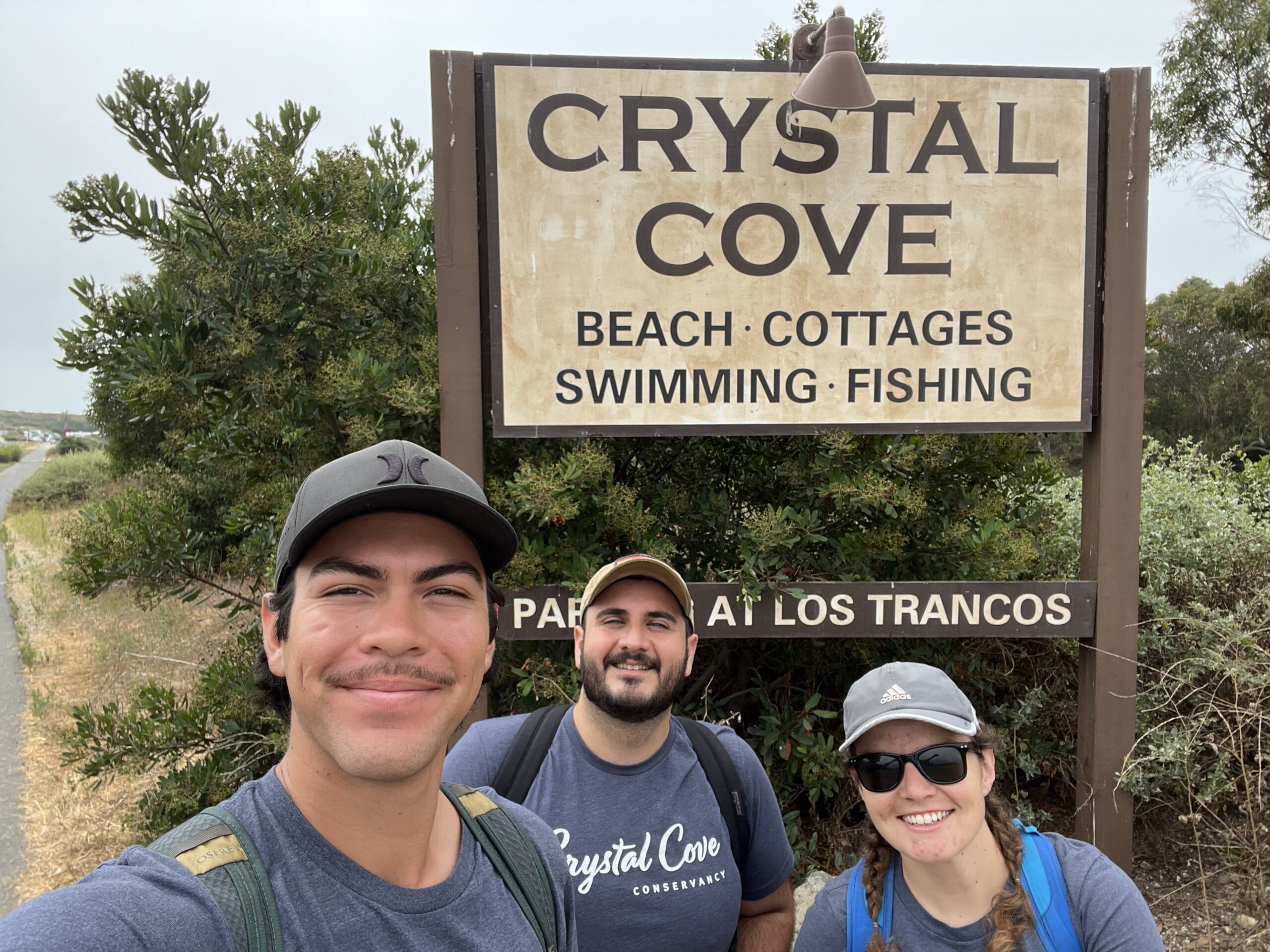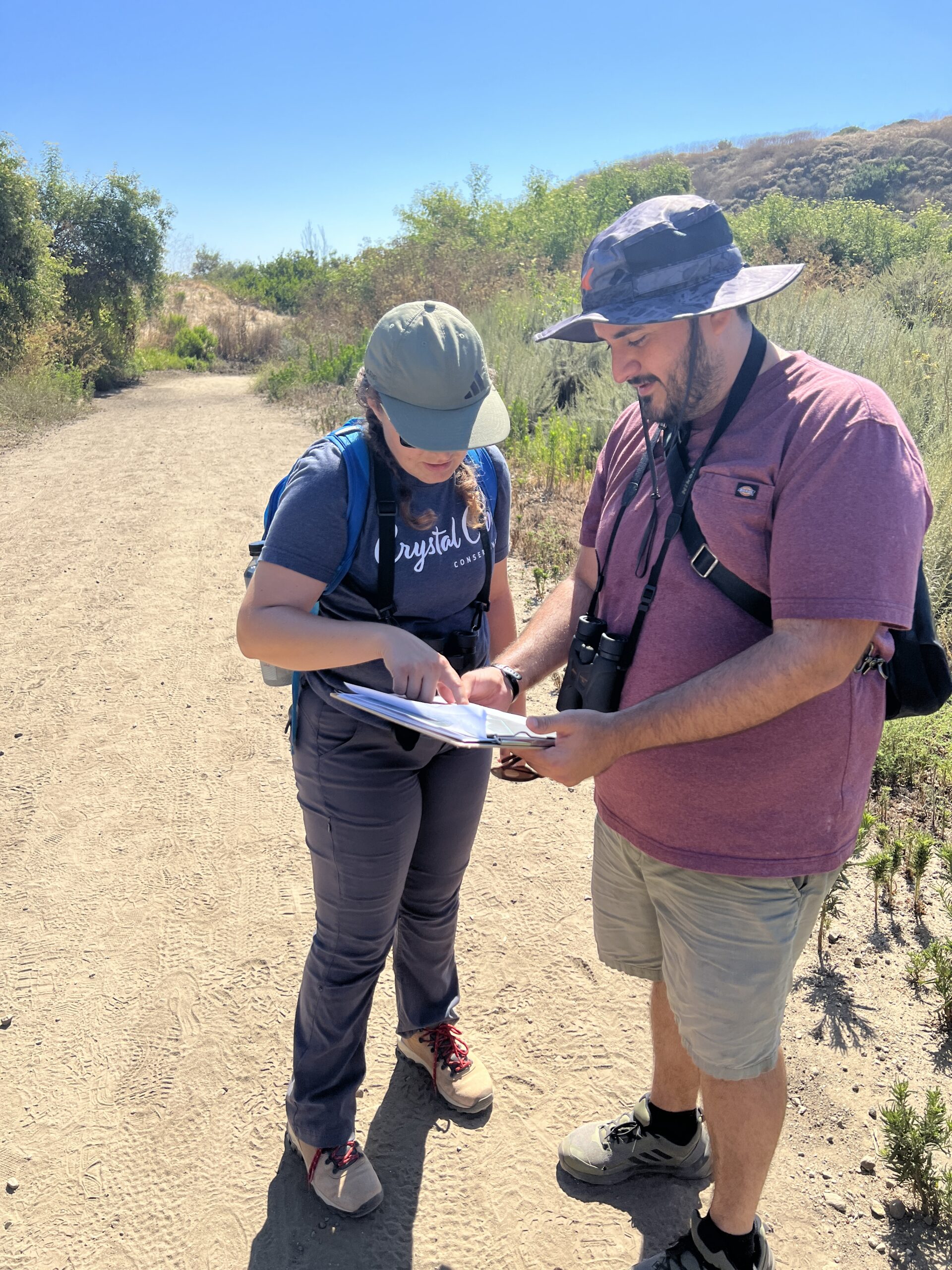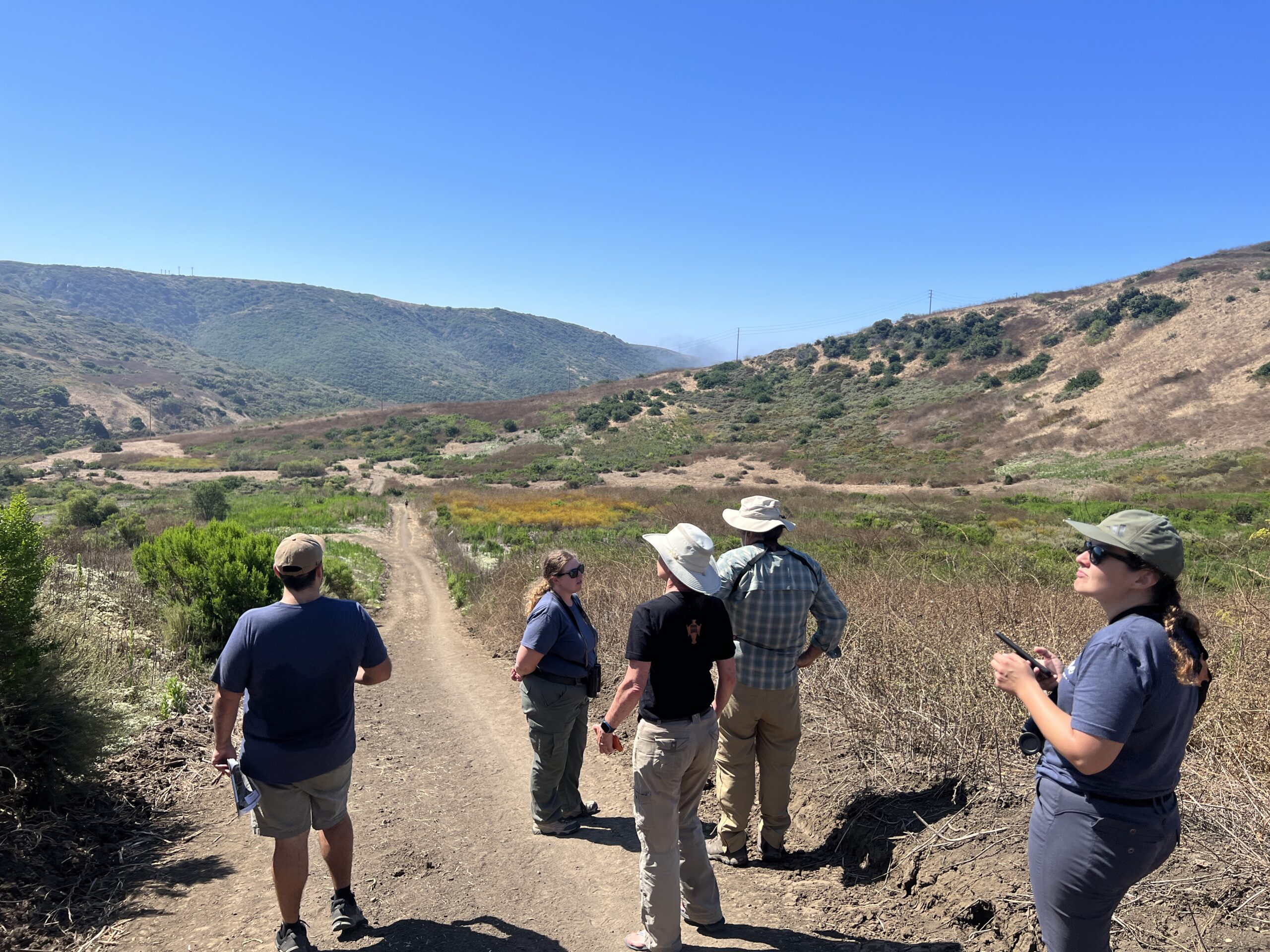A Summer at Crystal Cove; Through the Eyes of Natural Resource Interns
Written by: Luke Gonzalez
Each summer, Crystal Cove Conservancy in collaboration with California State Parks, hosts a cohort of undergraduate and graduate interns for the Natural Resource Internship program. Through this internship, qualified applicants from environmental disciplines and related degrees are offered hands-on experience in natural resource management. During the ten-week internship, members of the cohort are expected to design and carry out natural resource management projects under the guidance of Conservancy staff and State Parks mentors. In addition to the experience gained with project management, the interns also have the benefit of participating in career workshops and networking with State Park and local professionals to give them support in their early career endeavors. Before heading back to their respective campuses in the fall, projects are presented to State Parks Employees, local stakeholders, and relevant researchers.

Pictured left to right: Luke Gonzalez, Brent Castanon, Eryn Oelstrom
Divided into two, the cohort has been tasked with two different projects for the 2023 summer session. Led by graduate intern Brent Castanon, interns Eryn Oelstrom and Luke Gonzalez were appointed to the Raptor Nest Monitoring team. This team focused on filling a gap in nest monitoring procedures within Crystal Cove State Park. Historically, nest surveying efforts in Crystal Cove State Park have been disjointed and sparse. This project proposes to fulfill the need for a standardized protocol for raptor nest monitoring in Crystal Cove State Park. The resulting protocol will be designed for future employability by affiliated partners and agencies, and hopefully bolster the efficacy of volunteer-recorded results.

Image: Kim DiPasquale
Data on raptors, and its subsequent interpretation is integral for gauging the productivity of trophic producers below them. Raptors can signal early warning signs on changes such as habitat alteration, global heating, and the presence of environmental toxins. And with the health of raptor populations in California showing severe susceptibility to outside pressure, it is now more important than ever to track and record how these birds of prey are utilizing Crystal Cove State Park.
To begin, the team of interns sourced available data on raptor nests within Crystal Cove boundaries, from State Park data and biologist Scott Thomas. To cross reference historical findings and current nest conditions, the team conducted a series of field days canvasing all trails. After data synthesization, the findings were ready to be visualized. With the help of State Parks employees, they were able to create a working map of sites to base their monitoring efforts around. When designing maps, the team utilized industry standard ArcGIS software to ensure the future utility of their work. Then, the focus shifted to generating a replicable system of surveying protocols to inform volunteers the following seasons. Leaning on the precedent set by Irvine Ranch Conservancy, a system of training materials including training materials, field guides, and Survey123 forms were carefully put together by the team of interns.

Pictured: Eryn Oelstrom, and Brent Castonon, cross referencing historical nesting site locations on trail
With education, experience, and passions aligned, the program has provided the interns the space to grow as people and professionals. For intern Eryn Oelstrom, having the chance to hone skills while “working towards the creation of a conservation program for raptors was especially exciting”. Cross-disciplinary applications of knowledge in ornithology and conservation have Eryn “excited to see the future of the program”. In addition to the project generated by the interns, the career workshops proved especially valuable for Luke Gonzalez. Saying that, “gleaning wisdom from those who have taken the same path before me, is comforting as I begin to navigate the career landscape”. Furthermore, the work that the team completed in collaboration with “community partners has given [the team] insight into the different needs of each organization and how to plan a project that considers all of those different needs” according to team lead, Brent Castanon. Adding on, Brent also mentioned that “working within a team of other students has also really allowed each of us to use our individual strengths and interests to guide our team’s work, and has allowed us to learn from each other. I recommend this internship to any students that want to get to know what completing a professional project with State Parks feels like! You’re sure to learn a lot!”
 Coming out of this experience during the summer, the team of interns have been equipped with skills that will propel them in their burgeoning careers in natural sciences.
Coming out of this experience during the summer, the team of interns have been equipped with skills that will propel them in their burgeoning careers in natural sciences.
With the conclusion of protocol production in early fall, the Raptor Monitoring Team will then hand off their completed project to State Parks employees. From here, trained volunteers from Sea & Sage Audubon will participate in the program produced by the interns. Be on the lookout for announcements in early spring for the project launch!
